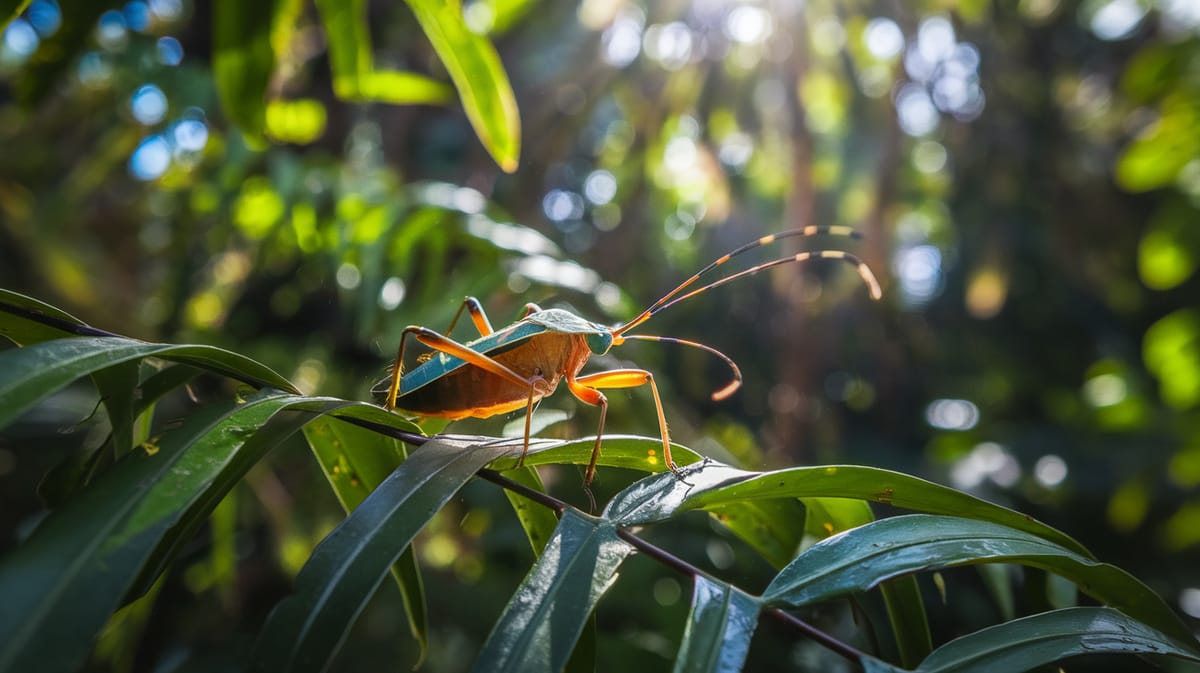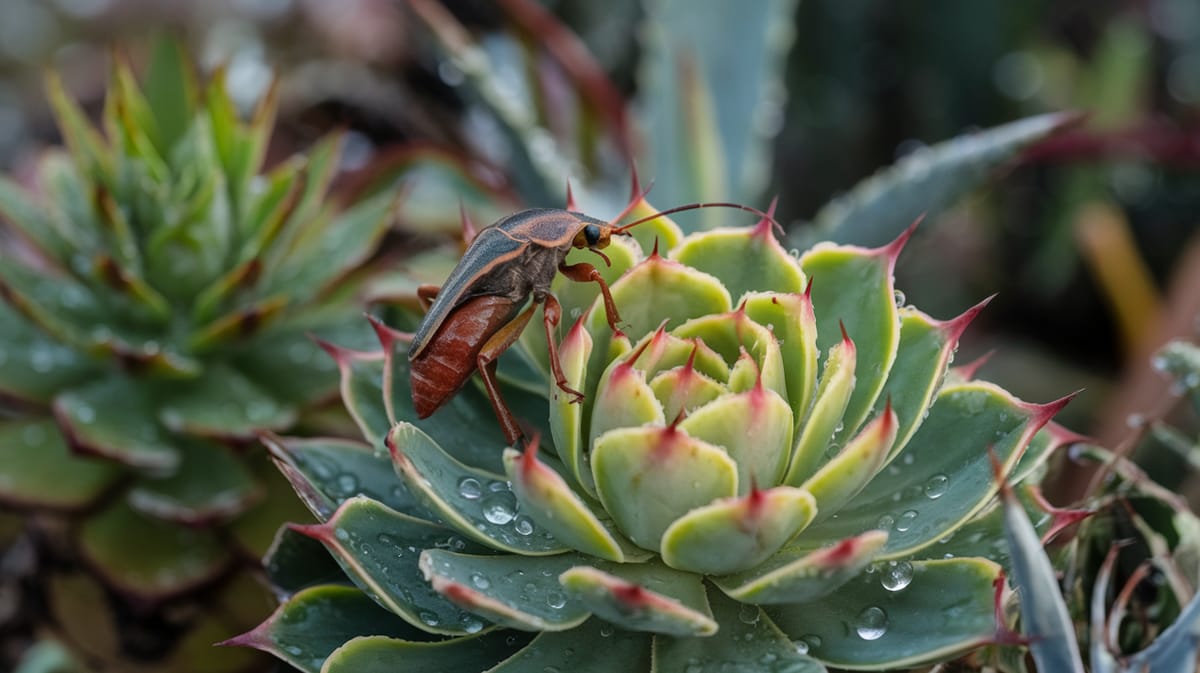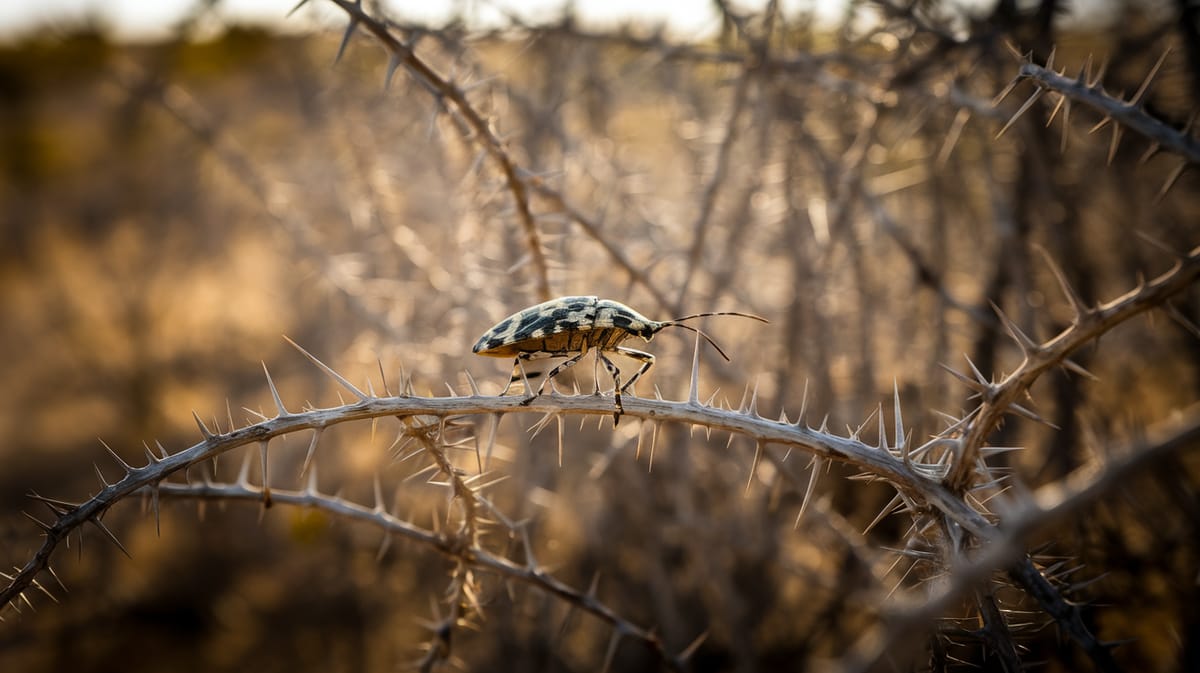Thorn Bug
Adorned with thorn-like projections, the Thorn Bug blends seamlessly into its surroundings, offering a masterclass in camouflage. Its unique form aids in defense and confounds predators.

Key Insights at a Glance
Did You Know?
Taxonomy & Classification
Thorn Bugs exhibit unique adaptations, such as their thorn-like protrusions, aiding in camouflage and protection from predators, reflecting their specialized evolution within the insect world. Let's understand the evolutionary journey and classification of these remarkable herbivores.
Global Distribution
Thorn Bugs are found widely in Central and South America, showcasing their adaptability to various tropical environments.
Evolutionary Adaptations
Originating in the Cenozoic era, Thorn Bugs developed thorn-like features to blend with plant stems, enhancing their survival against predators.
Lifecycle and Growth
A remarkable journey of transformation from Egg to Adult.
Egg
Laid on plant stems, eggs are tucked within plant tissue, providing protection and nutrients for the developing nymphs.
Nymph
Nymphs hatch resembling miniature adults and undergo several molts, gradually developing wings and other adult characteristics.
Adult
Adults are equipped with prominent spines and fully developed wings, crucial for mating and navigation.
Dietary Habits
A sap-feeder with specialized mouthparts, this insect extracts nutrients primarily from plant stems and branches, exploiting its plant-host relationships.
| DIET TYPE | DESCRIPTION |
|---|---|
| Primary Diet | Primarily feeds on the sap of trees and shrubs, using its piercing-sucking mouthparts to access plant nutrients. |
| Secondary Diet | Occasionally consumes secondary plant hosts, including various herbaceous plants and small shrubs, to diversify its diet. |
| Occasional | Rarely feeds on the sap of fruit-bearing plants, adapting to resource availability during limited conditions. |

Behaviour and Adaptations
Discover the fascinating adaptations that allow the Thorn Bug to thrive in its environment.
Camouflage Mastery
Thorn Bugs mimic thorns on branches for protection against predators.
Defensive Mobility
Quick jumps help Thorn Bugs escape threats and find new feeding sites.
Social Coordination
Communicates using wing vibrations to signal danger or alert others.
Ecosystem Impact
Thorn Bugs contribute to ecological balance by interacting with plants and other organisms in their habitats.
Plant Pollination Assistant
Helps with pollination by transferring pollen during feeding.
Natural Pest Control
Regulates plant health by feeding on excessive sap-sucking insects.
Nutrient Recycler
Breaks down plant matter, aiding nutrient cycling in soil.
Conservation Challenges
Understanding and addressing the major threats to Thorn Bug populations.
Habitat Loss
Deforestation and urban development reduce the natural habitats of Thorn Bugs.
Climate Change
Changing temperatures and weather patterns disrupt Thorn Bug breeding and feeding.
Chemical Exposure
Pesticides and pollutants threaten Thorn Bug survival and reproduction.
Frequently Asked Questions
How long do Thorn Bug live?
Thorn Bugs typically live for about six months. Their lifespan can vary depending on environmental conditions and availability of food. They undergo several life stages from egg to adult, with each stage contributing to their overall life expectancy.
What do Thorn Bug eat?
Thorn Bugs primarily feed on plant sap, using their piercing mouthparts to extract nutrients. They are often found on trees and shrubs, including acacia and citrus plants. Their feeding can sometimes cause damage to the host plant.
Are Thorn Bug poisonous?
Thorn Bugs are not poisonous to humans or pets. They are harmless and do not pose any significant threat. Though they might cause some damage to plants, they do not carry toxins or venom.
Are Thorn Bug endangered?
Thorn Bugs are not considered endangered. They are relatively common in their natural habitats, which include tropical and subtropical regions. Their population is stable, and they are not currently at risk of extinction.
What do Thorn Bug symbolize?
Thorn Bugs are often seen as symbols of protection and resilience due to their thorn-like appearance. They remind observers of nature's ability to adapt and protect itself, serving as a metaphor for self-defense and survival.
Do Thorn Bug bite?
Thorn Bugs do not bite humans. They have specialized mouthparts designed for feeding on plant sap, not for biting or stinging. They pose no threat of biting to humans or animals.
What color are Thorn Bug?
Thorn Bugs are typically green or brown, which helps them blend in with their surroundings. Their coloration can vary slightly depending on their environment, providing camouflage against predators.
Does a Thorn Bug have wings?
Yes, Thorn Bugs have wings. They possess two pairs of wings that allow them to move between plants. Their wings are often transparent with visible veins, aiding in their identification.
What does a Thorn Bug look like?
Thorn Bugs have a distinctive triangular shape with a sharp, thorn-like projection on their back. They are small, usually around 1 centimeter in length, and their appearance helps them blend into their environment.
Is a Thorn Bug an insect?
Yes, a Thorn Bug is an insect. It belongs to the order Hemiptera, commonly known as true bugs. This group is characterized by their piercing-sucking mouthparts and includes a wide variety of plant-feeding species.
Related Insects
Discover insects with similar characteristics to Thorn Bug - including shared habitats, diets, and taxonomic classifications
Share this profile
Help others discover Thorn Bug
